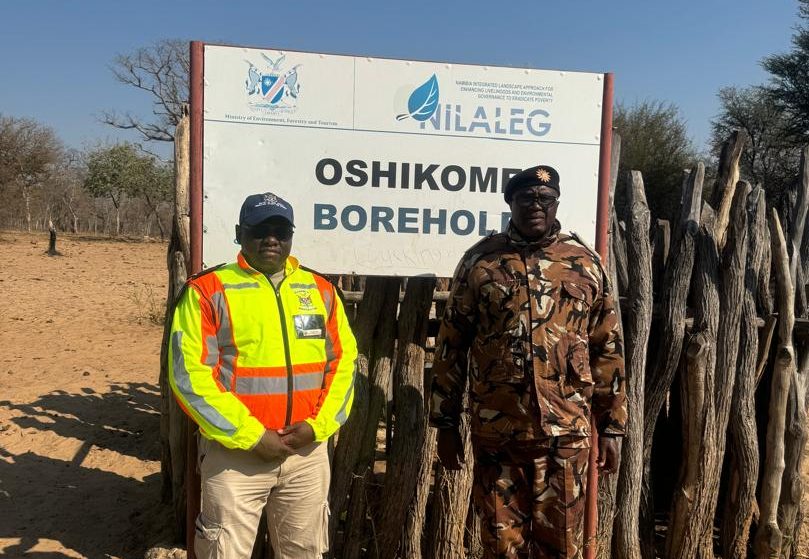Sustainable mining and environment, social, governance practises (Part 1)
Written by on June 6, 2024
The mining industry has a role to play in economic development, while also meeting the obligations of environmental and community protection.
Mining companies’ successes are increasingly also measured based on their social responsibility that goes beyond the promotion of economic growth.
Mining operations are complex in nature and closely linked to the environment.
Globally, 24,7% of environmental conflicts involving indigenous peoples are caused by mining (e.g. extraction of metallic and non-metallic ores, uranium mines and quarries) and 20,8% of conflict involve the fossil fuel industry (e.g. oil extraction and refineries, pipelines, coal mines and oil spills).
The mining sector in Namibia remains a key driver of economic development.
Undue emphasis is placed on the economic benefits at the expense of environmental protection.
Mining companies’ social responsibility are no longer measured solely by the various taxes or royalties they pay or the jobs they create, and globally face increased scrutiny on how they handle environmental issues such as pollution, tailings management, water stewardship, habitat protection, climate change and rehabilitation and restoration at mine closure.
In addition, social issues around health and safety, workers’ rights and the rights of indigenous people are also considered integral to the achievement of sustainable mining.
Most local mining companies have publically listed international investors that are keenly aware of these social responsibilities.
Indigenous people and affected communities, have been exposed to socio-environmental conflicts as a result of mining activities, which expose them to potentially serious environmental (livelihood loss and land dispossession, environmental pollution, threats to knowledge), social and health-related harms.
This, despite efforts to recognise and enforce the rights of indigenous peoples and affected communities through national legislation and global policy instruments such as the International Labour Organisation (ILO) Convention 169 and the United Declarations on the Rights of Indigenous Peoples (UNDRIP).
Namibia adopted the UNDRIP in 2007 but has not ratified ILO Convention 169.
What is sustainable mining?
Namibian mining companies are said to historically have a poor track record for sustainable mining.
The Environmental Management Act 7 of 2007 (EMA) specifically defines sustainable development as the “human use of a natural resource, whether renewable or non-renewable, or the environment, in such a manner that it may equitably yield the greatest benefit to present generations while maintaining its potential to meet the needs and aspirations of future generations including the maintenance and improvement of the capacity of the environment to produce renewable resources and the natural capacity for regeneration of such resources”.
The prevailing opinion is that sustainable mining involves the integration of environmental, social and governance (ESG) factors in business strategies.
Since 2004, investors now demand that companies report on ESG as good practice for sustainability.
ESG is a new concept in Namibia, and it is uncertain to which extent ESG has been incorporated into companies’ operational policies and procedures.
Studies have shown that businesses that adopted ESG measures saw an increase in financial value as a result of lower production costs and operational risks.
Unfortunately, transparency and the involvement, collaboration and consultation with indigenous peoples and affected communities are sorely lacking in Namibia.
How can the mining industry operate in a sustainable manner?
International approaches of ESG as good practices of sustainability suggests that it no longer may be sufficient, as is the case in Namibia, for companies to merely produce annual sustainability reports, which are not always disclosed publiclly, as mandated by the Global Reporting Initiative.
The Best Practice Guide, ‘Environmental Principles for Mining in Namibia’ developed by the Chamber of Mines, though commendable, may similarly be inadequate.
A recent Namibian case study examining ESG practices in the mining industry recommends that companies develop their knowledge and understanding of the 3 pillars of ESG and that ESG reporting should not only be quantitative but also standardised.
In as far as standardisation is concerned, the Chamber of Mines can play a meaningful role in this regard and either adopt or craft a similar standard as the one developed by the Mining Association of Canada.
‘Towards Sustainable Mining’ is an internationally recognised sustainability programme that goes beyond principles and requires mining companies to annually assess, publicly report and verify their facilities’ performance across a set of detailed environmental and social performance standards, including indigenous and community relationships.
Mining company-community conflicts are on the increase.
There can be no better time than now for the industry to evaluate their approaches to sustainability.
The future sustainability of the sector, not only future generations, depend on this.
– This article was made possible by support from the Hanns Seidel Foundation
The post Sustainable mining and environment, social, governance practises (Part 1) appeared first on The Namibian.


